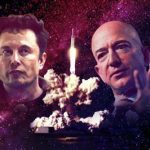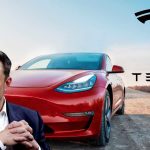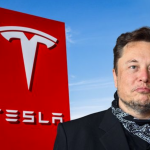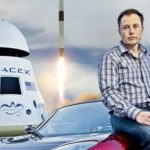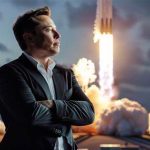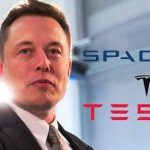Elon Musk’s Impact on Renewable Energy: SolarCity and Beyond 🌞⚡
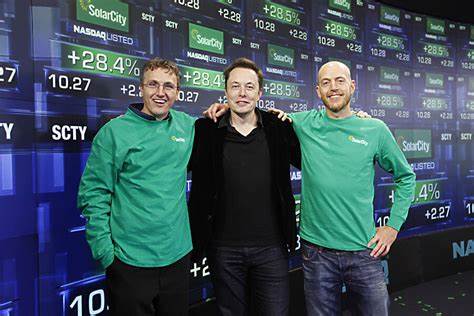
Elon Musk’s Impact on Renewable Energy: SolarCity and Beyond 🌞⚡
Elon Musk isn’t just a name—he’s a global symbol of innovation, a whirlwind of ideas who’s taken the world by storm. From rockets to electric cars, his fingerprints are everywhere, but one of his most transformative legacies lies in renewable energy. Through SolarCity and a constellation of bold initiatives, Musk has thrust sustainability into the spotlight, steering humanity away from fossil fuels and toward a cleaner, greener future 🌍. His mission? To harness the sun’s limitless power and make it the backbone of our energy systems. Let’s dive into how Musk has electrified the renewable energy space, from rooftop revolutions to grid-scale game-changers, and explore the ripples—and roadblocks—of his audacious vision!
SolarCity: A Solar Power Revolution ☀️
SolarCity didn’t start with Musk behind the wheel, but his influence turned it into a solar juggernaut. Founded in 2006 by his cousins, Peter and Lyndon Rive, with Musk as a key investor and chairman, SolarCity was born from a simple yet radical idea: make solar energy so accessible that every rooftop could become a mini power plant 🌱. Musk didn’t just write a check—he shaped the vision, pushing the company to slash costs, scale fast, and flip the script on how we think about energy. Here’s how SolarCity lit up the renewable landscape:
- Innovative Financing 💸
Before SolarCity, solar panels were a luxury—$30,000+ upfront costs locked out most homeowners. Musk’s crew smashed that barrier with solar leases and power purchase agreements (PPAs). Pay nothing down, install panels, and buy the electricity they generate at a lower rate than the grid—no savings required. By 2013, this model had hooked over 100,000 customers, democratizing solar and proving clean energy wasn’t just for the rich. It was a financial stroke of genius that turned sunlight into a paycheck for the average Joe. - Scaling Solar Adoption 📈
SolarCity didn’t mess around—by 2013, it was the top residential solar installer in the U.S., slapping panels on homes from California to New York. At its peak, it installed a system every five minutes, powering over 300,000 homes and businesses by 2016. That’s not just rooftops—it’s millions of tons of CO2 dodged, with estimates pegging SolarCity’s lifetime impact at 4 million tons avoided by 2025. Musk’s push made solar a household name, cutting U.S. reliance on coal and gas one sunny day at a time. - Tesla Tie-In 🚗
In 2016, Tesla scooped up SolarCity for $2.6 billion—a move Musk billed as the ultimate green mashup. Picture this: SolarCity panels feeding Tesla Powerwalls, charging Tesla EVs—a closed-loop energy ecosystem where your house powers your car with sunlight. It was bold, visionary, and… controversial. Critics screamed “bailout”—SolarCity was drowning in $1.5 billion debt, losing market share to cheaper rivals like Sunrun. Shareholders sued (settled in 2020 for $60 million), alleging Musk propped up a sinking ship. Flawed or not, the merger birthed Tesla Energy, fusing solar with cutting-edge tech and setting the stage for Musk’s next act.
Despite the drama, SolarCity’s legacy shines. It didn’t just sell panels—it sold a mindset, proving renewables could be practical, profitable, and pervasive. By 2025, Tesla Energy’s built on that foundation, powering millions more with the sun’s endless juice.
Beyond SolarCity: Tesla Energy and More 🔋
Musk didn’t park his renewable ambitions with SolarCity—he floored the accelerator, weaving solar into Tesla’s DNA and beyond. His post-SolarCity playbook is a masterclass in scaling green tech from homes to grids. Here’s the rundown:
- Tesla Powerwall ⚡
Launched in 2015, the Powerwall is Musk’s answer to solar’s big flaw: the sun doesn’t shine 24/7. This sleek, wall-mounted battery—starting at 5 kWh, now 13.5 kWh—stores daytime solar energy for nighttime use or blackouts. By 2025, over 500,000 Powerwalls dot homes worldwide, letting folks ditch the grid and run on sunlight round-the-clock 🌙. During 2021’s Texas freeze, Powerwall owners kept lights on while millions shivered—proof it’s not just green, it’s gritty. It’s energy independence in a box, and Musk’s team keeps tweaking—2023 models charge 20% faster, cost 15% less. - Solar Roof 🏠
Unveiled in 2016, the Solar Roof isn’t your grandpa’s solar panel—it’s a roof that is a solar panel. These glass tiles look like slate or shingles but pack photovoltaic cells, blending style with substance. By 2025, they’re tougher (hail-rated to 110 mph) and 20% more efficient than 2018 versions, turning homes into mini power stations without the clunky look. Installation’s still pricey—$50,000+ for a big house—but Musk’s betting on scale to drop costs. It’s a slow burn (50,000 installs by 2025), but a glimpse of his “solar everywhere” dream. - Megapack and Grid Solutions 🏭
For the big leagues, Musk unleashed the Megapack—think Powerwall on steroids. These shipping-container-sized batteries (3 MWh each) stabilize grids with renewable juice. The 2017 South Australia project—100 MW in 100 days—saved $40 million in its first year, powering 30,000 homes during peak demand. By 2025, Megapacks dot California, Texas, and Europe, storing wind and solar to smooth out fossil fuel dips. Musk’s not just electrifying houses—he’s rewiring regions, proving renewables can go industrial-scale.
A Visionary’s Ripple Effect 🌊
Musk’s renewable energy push isn’t a solo act—it’s a tidal wave reshaping the world. SolarCity’s leasing model sparked a frenzy—competitors like SunPower and Vivint Solar copied it, driving U.S. solar installs from 1 GW in 2006 to 150 GW by 2025. Tesla’s Powerwall and Solar Roof nudged legacy energy firms—think Duke Energy or EDF—into battery storage and rooftop solar. Even oil giants like BP and Shell are dipping toes in renewables, spooked by Musk’s momentum. His X megaphone amplifies it—tweets like “Solar is the future” (2023) or that 2018 Roadster-in-space stunt 🚀 keep green tech trending, making sustainability sexy.
- Environmental Impact 🌿
The numbers sing: SolarCity’s legacy avoids 4 million tons of CO2 by 2025; Tesla Energy’s Powerwalls and Megapacks add another 5 million tons dodged. Pair that with Tesla’s EVs (25 million tons cut since 2008), and Musk’s green footprint is a forest of carbon savings—34 million tons total, like yanking 7 million gas cars off roads. It’s not the whole climate fight, but it’s a massive swing at fossil fuel’s chokehold. - Challenges ⚠️
Not so fast—green doesn’t mean spotless. Battery production’s a sore spot: lithium mining drains water (1 million gallons per ton in Chile), cobalt digs scar the DRC (60% of supply, ethical mess). A 100-kWh Powerwall or EV battery emits 5-10 tons of CO2 to make, offsetting some gains. Musk’s timelines—Solar Roof in every home by 2020?—often overshoot, drawing eye-rolls. Yet he persists, tweaking supply chains (cobalt-free LFP batteries) and betting on recycling breakthroughs (2020’s “Battery Day” promises still brewing). Flaws sting, but they don’t stall him.
What’s Next? 🔮
Musk’s renewable energy saga is far from over—it’s accelerating. His “Master Plan Part 3” (2023) is bonkers: a $10 trillion roadmap to electrify the globe with solar, wind, and batteries by 2050. Picture 240 terawatt-hours of storage, 30 TW of solar—enough to power Earth 10 times over, all renewable. It’s wild, maybe unfeasible, but that’s Musk: shoot for Mars, land on the moon. Tesla Energy’s eyeing gigawatt-scale projects—think California’s 1.5 GW Moss Landing Megapack (2024)—while Solar Roofs aim for mass adoption (1 million homes by 2030?). And don’t forget Mars—Starship’s 2025 orbital tests hint at solar-powered colonies, with Musk musing about “terraforming with solar mirrors.”
A Green Legacy in Motion
Elon Musk’s impact on renewable energy—SolarCity’s rooftop rebellion, Tesla Energy’s battery boom—is a tale of audacity and grit. He’s not just building gadgets; he’s igniting a movement, dragging the world toward sustainability with every panel, pack, and plan. By 2025, U.S. solar capacity doubles since 2016, EVs hit 10% of sales, and Musk’s fingerprints are all over it—$200 billion net worth aside, his real currency is change. Critics nitpick—mining woes, missed deadlines—but the trajectory’s clear: fossil fuels are fading, and Musk’s pushing the pedal.
So, what’s his next green trick? A solar-powered Hyperloop? A Megapack for Mars? Whatever it is, Musk’s not slowing down—he’s got the sun in his sights and humanity on his back. What do you think he’ll dream up next? Drop your guesses—this revolution’s just heating up! 🌟

